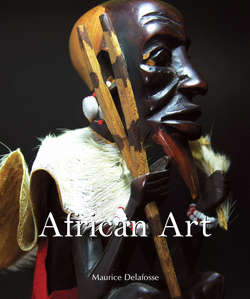Читать книгу African Art - Maurice Delafosse - Страница 7
На сайте Литреса книга снята с продажи.
Origins and Prehistory
Oceanic Migrations
ОглавлениеIn principle, there could be no opposition to the proposal that the current of population flowed in an inverse direction and that the Negroes of Melanesia should be considered of African origin. But an attentive examination of native traditions tends to favour the first of the two hypotheses. However vague these traditions, whatever their apparent incoherence and with whatever highly supernatural garments they have been clothed by the imagination and the superstition of the Negroes, they strike the most biased mind by their concordance and lead one to think that, once disengaged from their accessories, they possess a basis of truth.
All the Negro tribes of Africa claim that their first ancestors came from the east. Of course migrations have taken place in all directions; but, if we analyse methodically all the circumstances of which we have knowledge, we ascertain that the movements in any other direction than to the west took place as the result of local wars, epidemics, droughts, and always at an epoch later than that at which the particular group dates the beginning of its history. If we push the natives whom we interrogate to their last retrenchments, they invariably show us the rising sun as representing the point whence departed their most ancient patriarch.
It appears then, that one may, until proof to the contrary be forthcoming, admit as established the theory according to which the Negroes of Africa are not, properly speaking, autochthonous, but come from migrations having their point of departure towards the limits of the Indian Ocean and the Pacific. It is better to abstain from specifying the precise epoch or epochs of these migrations. All that we are permitted to affirm is that, when the existence of the African Negroes was revealed for the first time to the ancient peoples of the Orient and of the Mediterranean, they already occupied, and undoubtedly for a very long time, the same regions in which we find them in our day and they appear to have lost since that time the precise remembrance of their original habitat.
Rock engraving (San), c. 2000–1000 BCE.
South Africa. Andesite rock, 53 × 54 × 24 cm.
McGregor Museum, Kimberley.
Southern Africa has an immensely diverse and abundant wealth of rock art. These engravings, though less widely acknowledged than the rock paintings, exhibit an incredible variety of technique, content, and history. Spanning centuries, the oldest dated rock engravings go back to around 12,000 BCE, while oral history leads us to believe some were made as recently as the 19th century.
Human, animal, and geometric forms, as seen here, were found in various areas, starting with just a few on hilltop boulders and ranging to many hundreds or thousands in larger sites, like near Kimberley close to where these were found. It is believed that the symbolism of San art is associated with religious beliefs and trance experiences. It is possible that these engravings are the result of tranceenduced visions, which were displayed on strategically chosen rocks that were made to spiritually inspire others. Today, extensive efforts are made to preserve these rocks, especially for their contribution to the landscape in honour of the topophilia which is discussed in some 19th-century San folklore.
